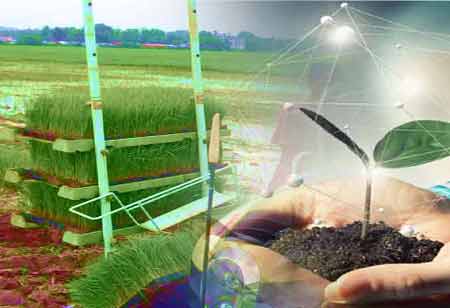Thank you for Subscribing to Agri Business Review Weekly Brief
Transforming Greenhouse Farming for Optimal Crop Growth
Greenhouse farming in the US is undergoing a transformative evolution driven by various factors

By
Agri Business Review | Thursday, September 21, 2023
Stay ahead of the industry with exclusive feature stories on the top companies, expert insights and the latest news delivered straight to your inbox. Subscribe today.
Technological advances have transformed greenhouse farming, enabling growers to optimize growing conditions and achieve higher yields while reducing environmental impact.
FREMONT, CA: Greenhouse farming in the US is undergoing a transformative evolution driven by various factors, including the rising demand for locally grown produce, challenges faced by traditional outdoor farming methods, and the increasing impact of climate disturbances. As technology advances, farmers gain unprecedented control over their growing environments, thanks to innovations in Controlled Environment Agriculture (CEA). Greenhouses equipped with CEA technology are revolutionizing the industry by yielding higher crops, reducing operational costs, conserving water, and minimizing the use of fertilizers and pesticides, thus significantly lowering their ecological impact.
In the face of future challenges, such as the need for a more resilient food system, emerging technologies empower greenhouse growers to be more ecologically friendly while catering to consumers' preferences for fresh, local fruits and vegetables. Unlike traditional open-field farming, where weather and climate play a significant role, greenhouse farming offers a unique advantage - almost every aspect of the greenhouse environment can be controlled. Cutting-edge agricultural advancements can be seamlessly incorporated into greenhouse farming, making it more effective and efficient.
AI is at the forefront of these advancements and has also found its way into greenhouse technology. By utilizing smart sensors and real-time data analysis, AI systems can precisely regulate various environmental factors within the greenhouse, such as temperature, humidity, and pH. This automation reduces the need for continuous human intervention and leads to more consistent and optimal growth conditions. With time, AI becomes even smarter as it learns from each interaction, enabling it to create predictably perfect conditions for crop growth.
Water management is a critical aspect of greenhouse farming, and as water scarcity becomes a pressing concern, efficient water usage is crucial. Automatic irrigation systems are vital in providing crops with the right amount of water, reducing waste, and ensuring optimal yields. Greenhouses also embrace self-sufficient water technologies, such as water recirculation, rainwater harvesting, and condensation collection, to further conserve this precious resource.
Proper lighting is essential for greenhouse crops, but relying solely on sunlight can be challenging, especially in regions with varying sunlight levels throughout the year. Energy-efficient and adjustable LED lights are replacing traditional incandescent lights. These LEDs offer greater flexibility in adjusting the light spectrum to suit specific plant needs, making them the preferred choice for many greenhouse operations.
Although greenhouses provide a warm refuge for plants during colder months, excessive heat can hinder plant growth. Cooling systems are now being implemented alongside natural ventilation strategies, ensuring the ideal growing conditions year-round to regulate greenhouse temperatures.
As the industry continues to evolve, it promises to meet future challenges by building a resilient and sustainable food system while satisfying the growing demand for fresh and locally sourced produce.





